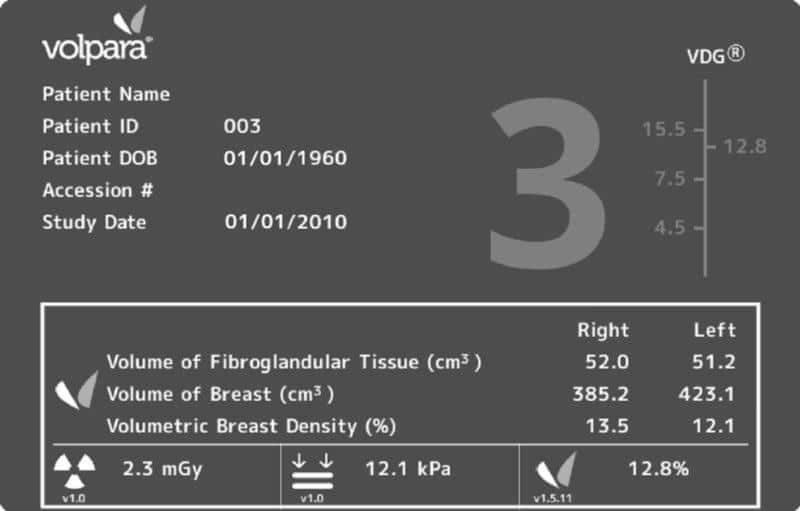3D Automated Whole Breast Ultrasound imaging technology utilizes ultrasound to scan the entire breast while the patient lays in a comfortable prone position. There is no breast compression or radiation associated with this procedure. The scan produces 3D volumetric images of the breast for review by the radiologist.
This ultrasound is specifically designed for woman with dense breast tissue. Women with dense breast tissue have a 4 – 6 times greater risk of developing breast cancer when compared to woman with non- dense tissue. Dense tissue patients who add the 3D Automated Whole Breast ultrasound to their annual mammogram can double the chances of earlier breast cancer detection.
What is Dense Breast Tissue and Why Should I Be Aware?
Dense breast tissue is comprised of less fat and more connective tissue which appears white on a mammogram. Cancer also appears white on a mammogram thus tumors are often hidden behind the dense tissue. As a woman ages, her breasts usually become more fatty.

How Do I Know If I Have Dense Breasts?
A radiologist determines the density of a woman’s breasts by examining a mammogram. Request a copy of your mammography report from your referring doctor. Make sure it is the report that is generated from the radiologist and not a form letter. Read the report carefully. Look for any descriptions of your breast tissue density. DMS utilizes the Volpara automated volumetric breast density software.
Volpara Solutions
An automatic, objective, and reproducible way for standardized determination of breast density. This is a clinically accepted way to reduce the variation in the outcome of breast density on repeated examination or different radiologists.
Volpara Volumetric Determination
Volpara calculates the volumetric breast density. The result is the volume of dense breast tissue consisting of fibrous tissue and glandular tissue, the total volume of the breast, the percentage of dense tissue and a BI RADS® density category. Volpara is vendor neutral.

Risk Factors For Women With Dense Breasts
- 40% of women who have a screening mammogram have dense breast tissue.
- The sensitivity and specificity of mammography is decreased in dense breast tissue.
- The American Cancer Society (ACS) now places the relative risk of breast cancer due to high tissue density at 4-6 times the norm.
Risk Factors and Levels of Risk
Age – Strong increased risk
80%
Family History – Strong increased risk
80%
Dense Breast Tissue – Strong increased risk
80%
Personal History of Cancer – Strong increased risk
80%
One first-degree relative diagnosed – Moderate increased risk
60%

